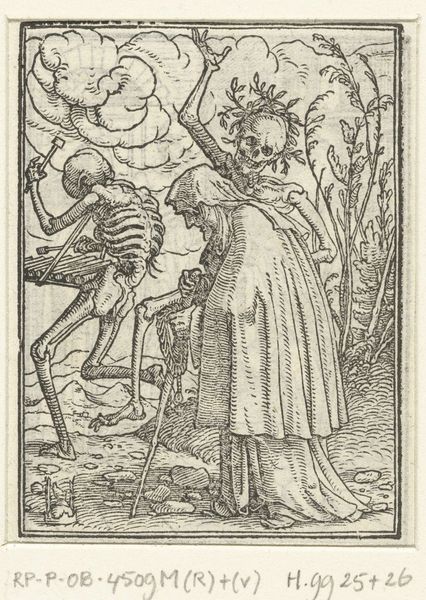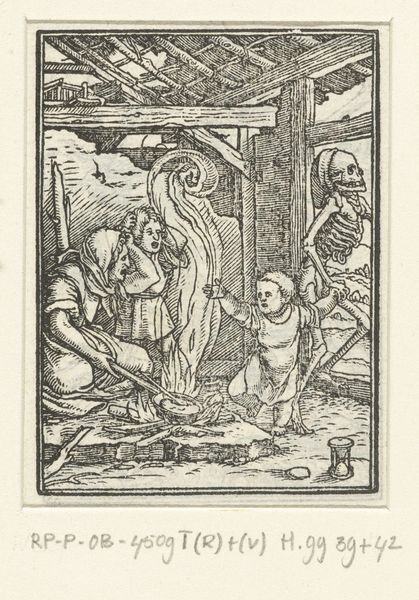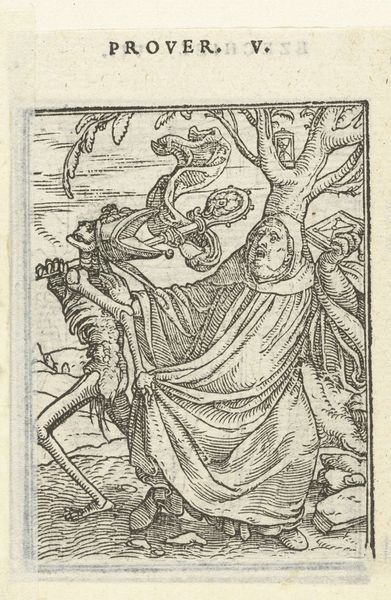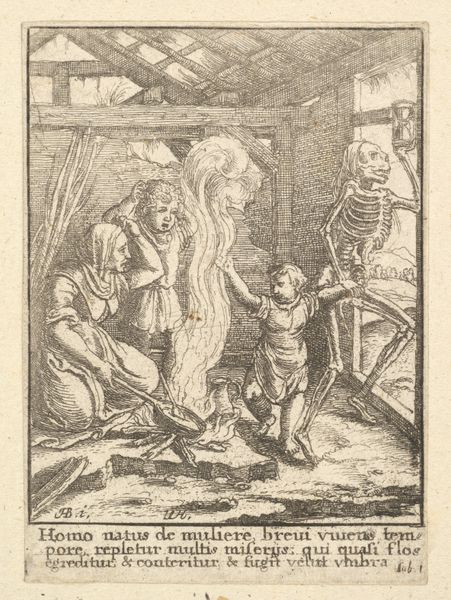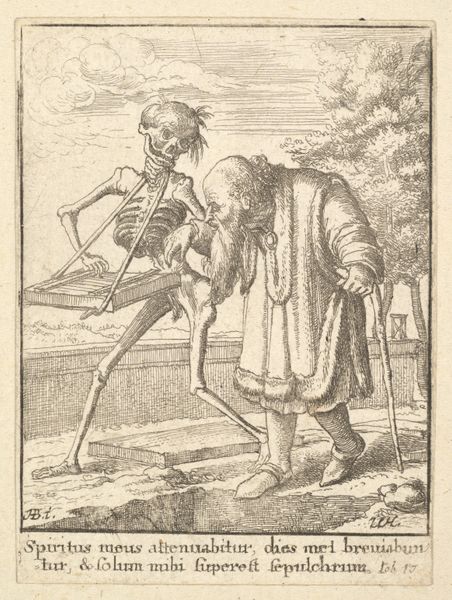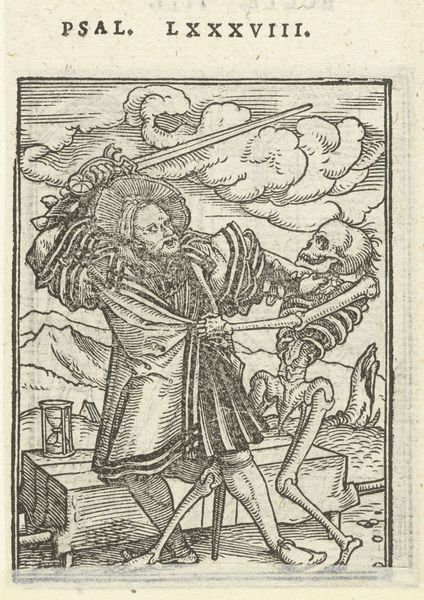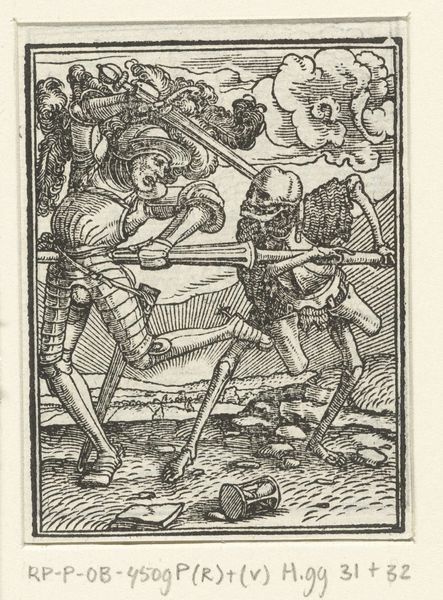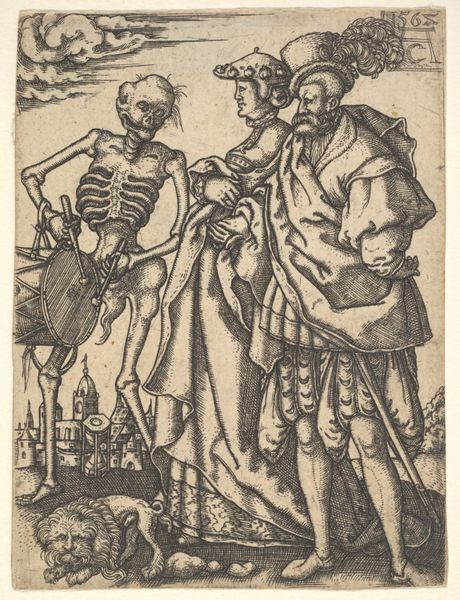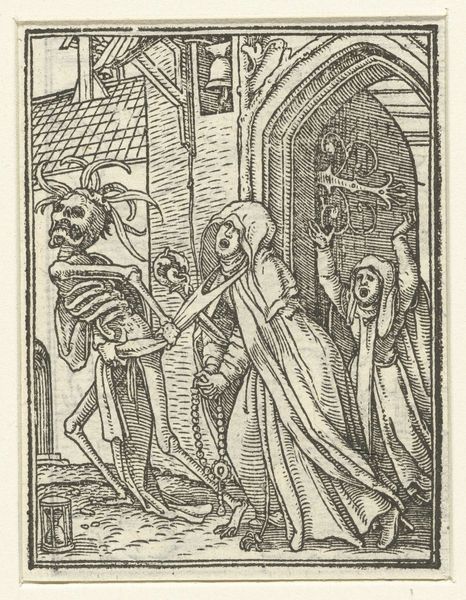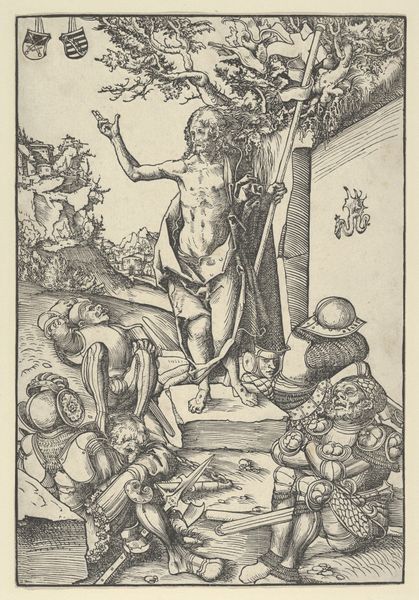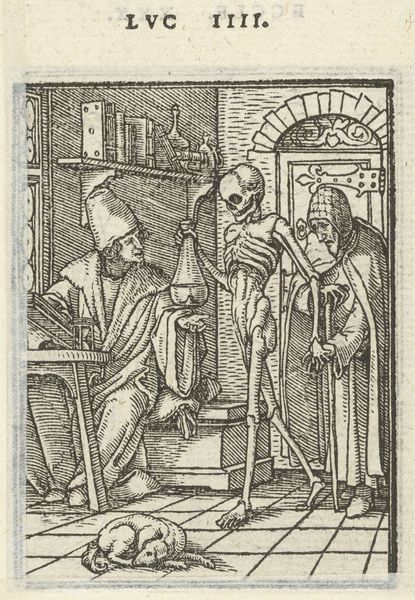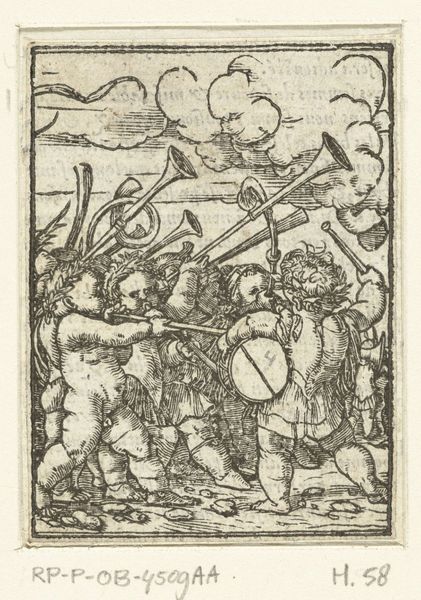
woodcut, engraving
#
portrait
#
medieval
#
allegory
#
pen drawing
#
figuration
#
woodcut
#
line
#
history-painting
#
northern-renaissance
#
engraving
Dimensions: height 65 mm, width 50 mm
Copyright: Rijks Museum: Open Domain
Curator: This engraving, "Old Man and Death" by Hans Holbein the Younger, dates back to the period of 1524-1538. The artwork resides here at the Rijksmuseum. Editor: Gosh, just looking at it, I feel the chill of inevitability. It’s small, intricate, but heavy with the mood, like a gothic joke, really. Death's jaunty pose versus the old man, so weary. I want to write a poem about it. Curator: Holbein masterfully captured the zeitgeist of the Northern Renaissance. The image forms part of his "Dance of Death" series, an allegorical representation speaking directly to themes of mortality, salvation, and societal critique that marked this era. It prompts consideration of aging, religion, social justice, and class struggle. Editor: Right, the grim reaper with a violin... is it a violin? Makes you wonder about life's soundtrack at that stage, doesn't it? It is darkly comical as the old man walks towards his final destination, escorted none other than the death personified, skinny and bold, and a bit ironic perhaps. It also reminds that death spares no one. Curator: Absolutely. The hourglass serves as an unambiguous symbol of fleeting time, positioned strategically near what seems to be his coffin. And note that, although allegorical, its pointed critique towards the wealthy is achieved by the garments and belongings of the man in the composition. Editor: There’s a certain beauty, though. The delicate lines almost make it seem dreamlike. Like a half-remembered nightmare about aging, I find it quite haunting but weirdly elegant. But if I zoom out and think about its impact… this kind of raw symbolism cuts through social niceties to get right at existential fears and questions. Curator: And this potent iconography, combined with Holbein’s mastery, grants it enduring relevance even now. Holbein makes very astute observation that unifies diverse fields of understanding: it speaks about gender, race, economy, and identity. Editor: Definitely leaves you pondering your own dance moves with…well, you know. Curator: Indeed. And therein lies the potency and the brilliance of Holbein's contribution.
Comments
No comments
Be the first to comment and join the conversation on the ultimate creative platform.
